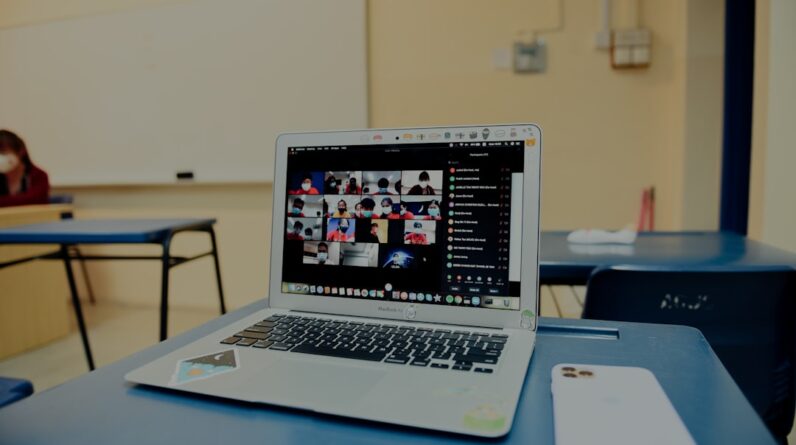The Best Way to Learn Spanish
When you think about learning a new language, one of the most effective methods is immersion. Traveling to a Spanish-speaking country can provide you with an unparalleled opportunity to practice your language skills in real-life situations. Imagine walking through the vibrant streets of Barcelona or the bustling markets of Mexico City, where every sign, conversation, and interaction is in Spanish.
This kind of environment forces you to adapt quickly, picking up vocabulary and phrases that you might not encounter in a classroom setting. The sounds, sights, and smells of a new culture can enhance your learning experience, making it more memorable and impactful. Moreover, immersion allows you to engage with the local culture on a deeper level.
You can participate in community events, try traditional foods, and even make friends who speak Spanish fluently. These interactions not only improve your language skills but also give you insights into the customs and traditions of Spanish-speaking countries. You may find yourself learning colloquial expressions and slang that textbooks often overlook.
By surrounding yourself with native speakers, you will develop a more authentic accent and a better understanding of the rhythm and flow of the language.
Key Takeaways
- Immersion in Spanish-speaking countries provides the best opportunity to practice and improve language skills.
- Language learning apps and websites offer convenient and interactive ways to learn and practice Spanish.
- Enrolling in Spanish language classes can provide structured learning and guidance from experienced instructors.
- Practicing with native Spanish speakers helps improve conversational skills and cultural understanding.
- Incorporating Spanish into daily life through activities like cooking, listening to music, and labeling household items can reinforce language learning.
Utilizing Language Learning Apps and Websites
In today’s digital age, language learning apps and websites have revolutionized the way you can acquire new skills. Platforms like Duolingo, Babbel, and Rosetta Stone offer interactive lessons that cater to various learning styles. These tools allow you to practice vocabulary, grammar, and pronunciation at your own pace, making it easier to fit language learning into your busy schedule.
You can practice during your commute, while waiting in line, or even during your lunch break. The convenience of these apps means that you can turn any spare moment into an opportunity for growth. Additionally, many of these platforms incorporate gamification elements that make learning fun and engaging.
You can earn points, unlock levels, and compete with friends, which adds a layer of motivation to your studies. Some websites also offer community features where you can connect with other learners or native speakers for practice. This social aspect can enhance your learning experience by providing you with support and encouragement from fellow language enthusiasts.
By utilizing these resources effectively, you can create a well-rounded approach to mastering Spanish.
Enrolling in Spanish Language Classes
While self-study is valuable, enrolling in formal Spanish language classes can provide structure and accountability to your learning journey. A classroom setting allows you to benefit from the expertise of a qualified instructor who can guide you through complex grammar rules and pronunciation nuances. You will also have the opportunity to engage in group activities that promote speaking and listening skills.
The dynamic environment of a classroom fosters collaboration and encourages you to practice speaking with your peers. Moreover, classes often follow a curriculum that builds upon previous lessons, ensuring that you develop a solid foundation in the language. You will likely cover essential topics such as verb conjugations, sentence structure, and vocabulary expansion in a systematic way.
Additionally, many language schools offer cultural immersion experiences alongside their classes, allowing you to explore the rich heritage of Spanish-speaking countries while enhancing your language skills. This combination of structured learning and cultural exposure can significantly accelerate your progress.
Practicing with Native Spanish Speakers
One of the most effective ways to improve your Spanish is by practicing with native speakers. Engaging in conversations with individuals who speak the language fluently can help you gain confidence and refine your skills. You might consider joining language exchange programs or conversation clubs where you can meet native speakers who are eager to help you learn.
These interactions provide a safe space for making mistakes and receiving constructive feedback, which is crucial for growth. Additionally, practicing with native speakers exposes you to various dialects and accents within the Spanish language. Each region has its own unique expressions and pronunciations, which can enrich your understanding of the language as a whole.
You may find that conversing with someone from Spain differs significantly from speaking with someone from Latin America. This diversity not only enhances your listening skills but also prepares you for real-world interactions when traveling or working in Spanish-speaking environments.
Incorporating Spanish into Daily Life
To truly master Spanish, it’s essential to weave the language into your daily routine. This could mean labeling items around your home with their Spanish names or setting aside time each day to practice speaking or writing in Spanish. By integrating the language into your everyday life, you create constant opportunities for exposure and practice.
For instance, you might choose to think in Spanish while going about your daily tasks or narrate your actions as you complete them. Another effective strategy is to consume media in Spanish as part of your daily routine. Whether it’s listening to Spanish music during your morning commute or switching your phone’s language settings to Spanish, these small changes can have a significant impact on your learning process.
The more you surround yourself with the language, the more natural it will become for you to think and communicate in Spanish. This consistent exposure will help reinforce what you’ve learned and make it easier to recall vocabulary and phrases when needed.
Watching Spanish TV Shows and Movies
One enjoyable way to enhance your Spanish skills is by watching TV shows and movies in the language. This method not only improves your listening comprehension but also exposes you to cultural references and colloquial expressions that are often used in everyday conversations. You might start by watching shows with English subtitles before gradually transitioning to Spanish subtitles or even no subtitles at all as your skills improve.
This progression allows you to challenge yourself while still having support when needed. Furthermore, watching films and series can help you understand different accents and dialects within the Spanish-speaking world. From the fast-paced dialogue of a telenovela to the more relaxed conversations in a comedy series, each genre offers unique insights into how the language is used in various contexts.
You may find yourself picking up new vocabulary or phrases that resonate with you personally, making it easier to incorporate them into your own speech.
Reading Spanish Books and Newspapers
Reading is another powerful tool for language acquisition that often gets overlooked. By immersing yourself in Spanish literature or current events through newspapers and magazines, you can expand your vocabulary while improving your reading comprehension skills. Start with children’s books or simple articles that match your current proficiency level before gradually moving on to more complex texts.
This gradual increase in difficulty will help build your confidence as a reader. Additionally, reading exposes you to different writing styles and cultural perspectives that enrich your understanding of the language. You may discover idiomatic expressions or literary devices that are unique to Spanish literature, enhancing both your linguistic skills and cultural knowledge.
Consider keeping a journal where you jot down new words or phrases you encounter while reading; this practice reinforces what you’ve learned and provides a handy reference for future use.
Using Flashcards and Memory Techniques
Finally, employing flashcards and memory techniques can significantly enhance your vocabulary retention as you learn Spanish. Flashcards are a versatile tool that allows you to focus on specific words or phrases that challenge you the most. You can create physical flashcards or use digital platforms like Anki or Quizlet that offer customizable options for spaced repetition—a technique proven to improve memory retention over time.
In addition to flashcards, consider using mnemonic devices or visualization techniques to help remember new vocabulary. Associating words with images or creating stories around them can make them more memorable. For example, if you’re trying to remember the word “perro” (dog), envisioning a playful puppy can create a mental link that makes it easier to recall later on.
By combining these memory techniques with regular practice, you’ll find that your ability to remember and use new vocabulary improves significantly over time. In conclusion, mastering Spanish requires dedication and a multifaceted approach that incorporates various methods of learning. Whether through immersion in Spanish-speaking countries, utilizing technology, engaging with native speakers, or incorporating the language into daily life, each strategy plays a vital role in enhancing your proficiency.
By embracing these diverse techniques, you’ll not only become more fluent but also gain a deeper appreciation for the rich culture associated with the Spanish language.
FAQs
What is the best way to learn Spanish?
The best way to learn Spanish is through a combination of methods, including immersive experiences, language classes, online resources, and practice with native speakers.
Is it better to learn Spanish through immersion or classes?
Both methods have their benefits. Immersion allows for real-life practice and cultural understanding, while classes provide structured learning and guidance from a teacher.
Are online resources effective for learning Spanish?
Yes, online resources such as language learning apps, websites, and videos can be effective for learning Spanish, especially when used in conjunction with other methods.
How important is practice with native Spanish speakers?
Practice with native speakers is crucial for improving fluency, pronunciation, and understanding of colloquial language and expressions.
What are some tips for learning Spanish more effectively?
Some tips for learning Spanish effectively include setting specific goals, practicing regularly, immersing yourself in the language and culture, and using a variety of resources and methods.








